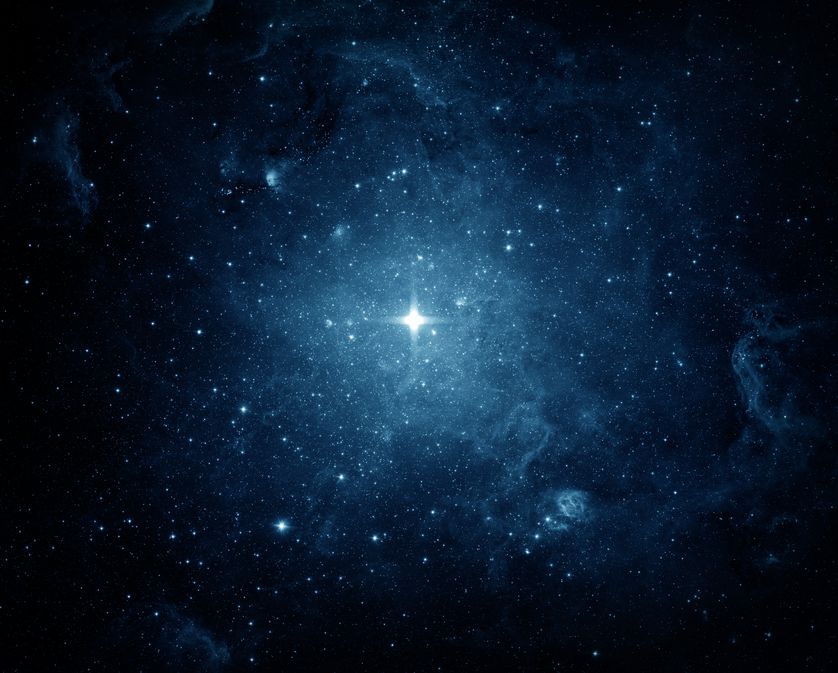
The universe may seem like an impossibly massive void, speckled only by stars, planets and the occasional cigar-shaped object.
But the truth is, the cosmos is rich with energy and elements. We just can’t process them.
In fact, for all of humanity’s probings into the cosmos — wielding everything from the Hubble Space Telescope to the 64-dish array of radio telescopes known as MeerKAT — we still can’t get a fix on some of its most common elements.
Like dark matter and dark energy.
Here’s how NASA puts it:
It turns out that roughly 68% of the universe is dark energy. Dark matter makes up about 27%. The rest — everything on Earth, everything ever observed with all of our instruments, all normal matter — adds up to less than 5% of the universe.
Imagine that. Everything that we know of our reality — all the matter that makes up stars, galaxies, the very ground beneath our feet — is but a pinprick to the 95% of what we don’t know.
Hence, the term “dark” — it doesn’t suggest what something may look like, but rather the gaping void in our capacity to understand it.
The sheer elusiveness of dark matter and dark energy may be a reason why they’re so commonly confused with one another. “Dark” is often a linguistic blank check for all things we don’t know.
But when it comes to understanding our reality, scientists don’t write blank checks. From a scientific standpoint, dark matter and dark energy — at least what’s known of them — are very different beasts.
Dark matter 101
Let’s start with dark matter. First, we know it’s out there.
“Motions of the stars tell you how much matter there is,” notes Pieter van Dokkum, a researcher at Yale University. “They don’t care what form the matter is, they just tell you that it’s there.”
Secondly, we know … not much. But NASA describes a few things dark matter is not. For one thing, it isn’t light — “meaning that it is not in the form of stars and planets that we see.”
For another, it isn’t a dark cloud of otherwise normal matter made up of normal particles. If it were, NASA would have picked up the scent by looking for radiation passing through one of their stellar veils.
Dark matter is also not antimatter, a material composed of subatomic particles that annihilate normal matter. (And, if we could add a layman’s theory, we also know that it is neither Nutella nor very old fruitcake.)
From there, everything else is in the realm of could-bes. It could be, for instance, Baryonic matter — meaning it’s composed of protons and neutrons — tangled up in celestial bodies known as brown dwarfs.
But the prevailing opinion is that dark matter is almost incomprehensibly foreign to us. It eschews the usual one-two punch of protons and neutrons in favor of far-out building blocks like axions or Weakly Interacting Massive Particles (WIMPS).
Dark energy 101
But while we can say that dark matter is a thing, dark energy is much more elusive — and as its name suggests, more dynamic. Think of it as a happening, rather than a thing.
As NASA notes, up until the 1990s, the universe was thought to be expanding at a much slower rate than it did immediately following the Big Bang.
An expanding universe, of course, has been a given since, Edwin Hubble — yes, that Hubble — first used an Earth-based telescope to note the “redshift” of distant galaxies, and by that we mean the farther away something is, the more the wavelength of the light is stretched, so the light is seen as “shifted” towards the red part of the spectrum.
The idea that this expansion would slow down over time makes sense. You can’t run from gravity.
But Hubble — the telescope this time — disabused us of that notion. It found evidence that the universe is expanding faster than anyone ever predicted. It’s growing at such a torrid clip, scientists say we may need to overhaul the rules of physics to understand why.
So what gives? What kind of energy is the universe possessed of that allows it to fly in the face of gravity? Einstein may have called it back in the early part of the 20th century with his theory of a cosmological constant — a discarded notion that scientists dismissed as his “greatest blunder.”
His theory suggests an unvarying density of energy causing the universe to buck against gravity and push outward. That energy saturates even the blankest expanses of space.
Hello dark energy, our old friend. Of course, the only sign of its existence is the fact that something is pushing this ever-accelerating cosmic expansion. Is it, as some theories suggest, a fluid or field that fills space and has a counteractive effect on matter and energy as we know it?
Or, have we put too much stock in one of Einstein’s most influential theories, the theory of gravity? Maybe he was wrong about its influence on the universe? Anyone feel like out-Einsteining Einstein and coming up with a new theory of gravity?
We didn’t think so.
~ Source CHRISTIAN COTRONEO
Still feeling in the “dark” about the differences between these strange phenomena? You’re not alone, but this video may help:
